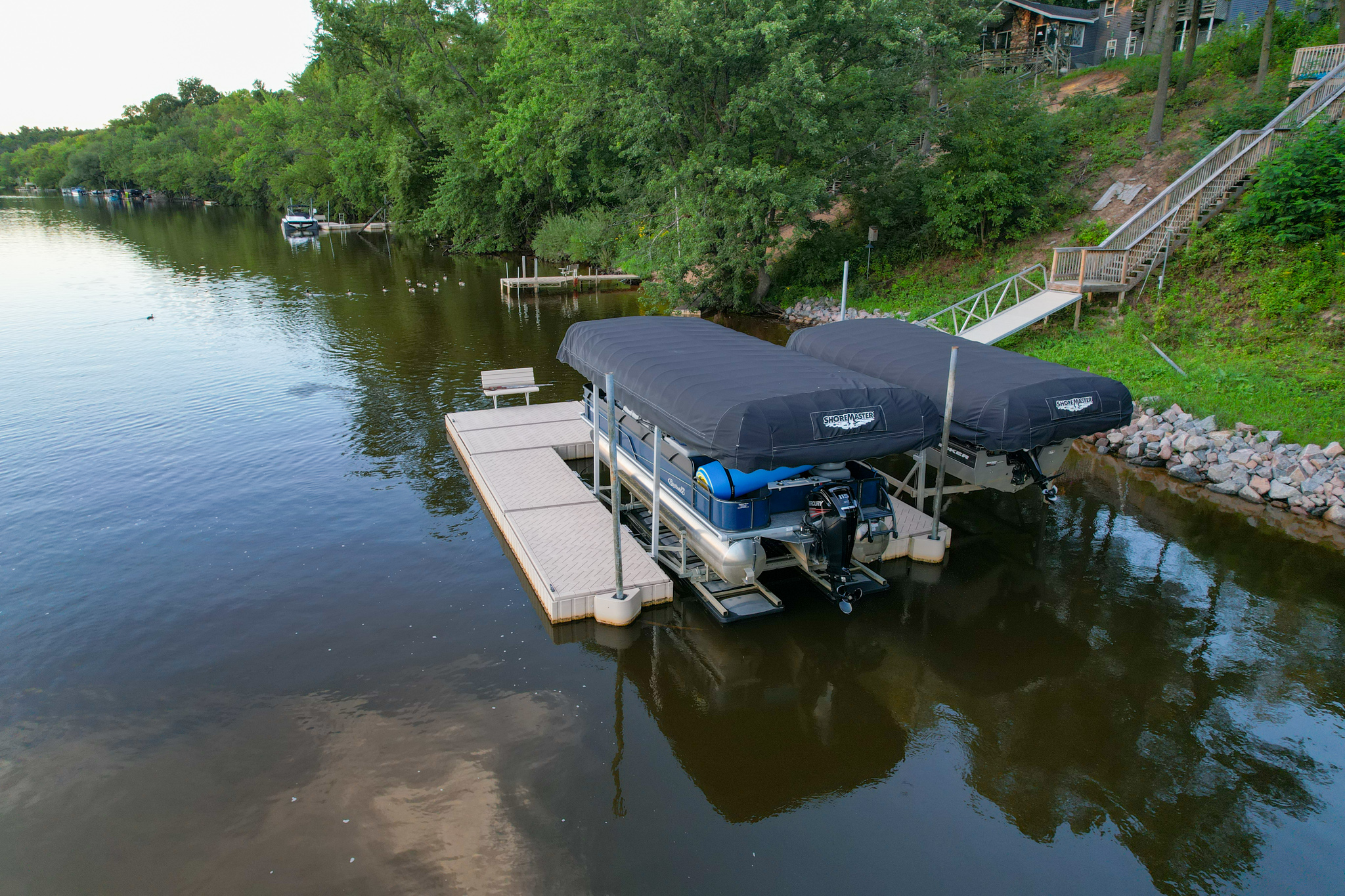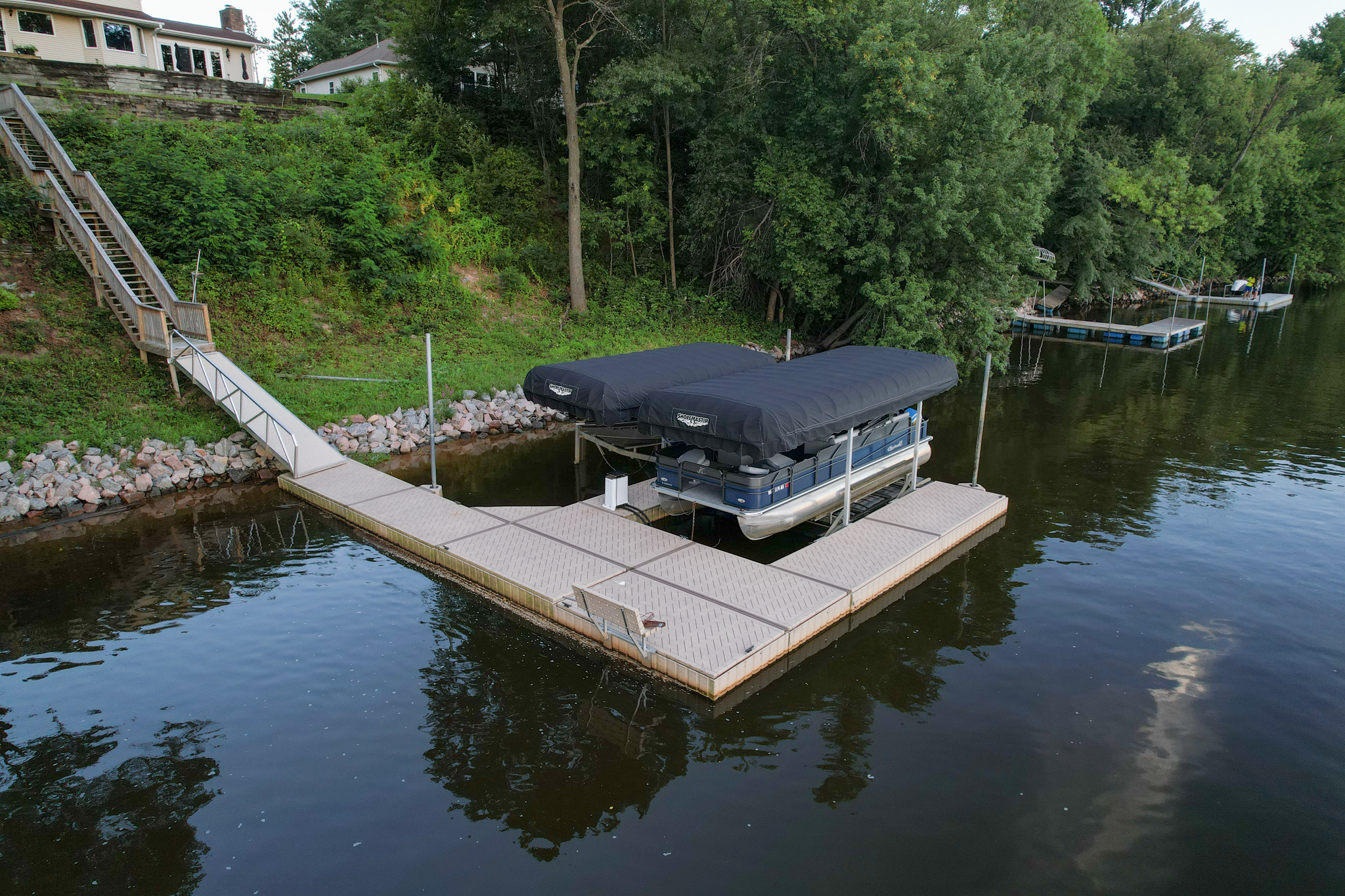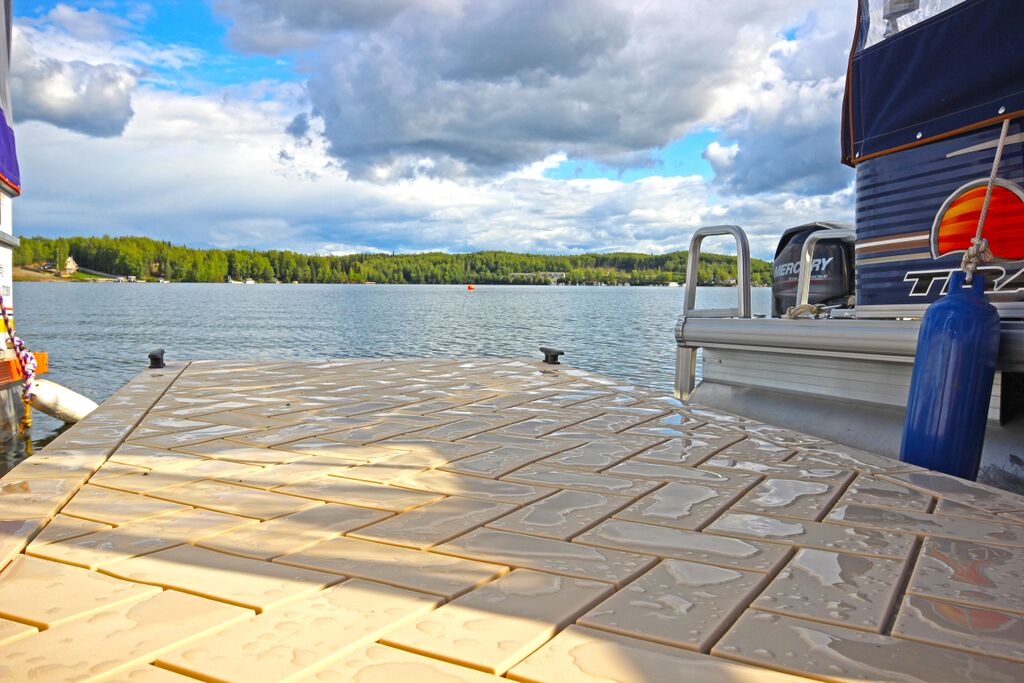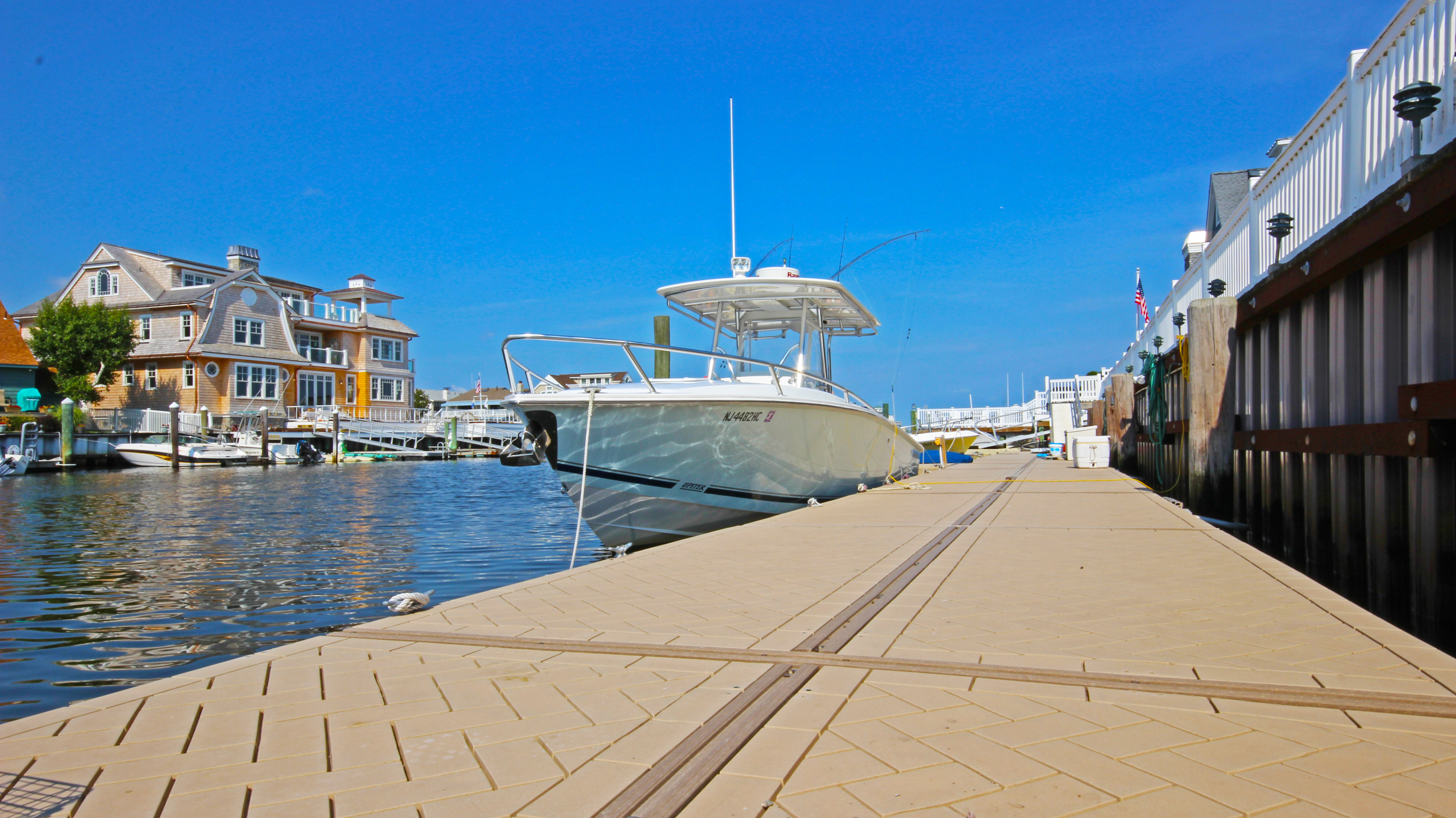Posted on July 31, 2025
Building a Dock on a Lake: Guide on How to Build a Dock on a Lake | PolyDock Products
Written by PolyDock Products Marketing
Everything You Need to Know About Building a Floating Dock on a Lake
Thinking of creating your personal lakeside haven? Below, we walk you through the primary considerations when building a floating dock and why PolyDock stands out as one of your best options.

Why Choose a Floating Dock for Your Lakefront
Over the years, floating docks have been favored by pragmatic waterfront property owners thanks to their versatility, adaptability, and ease of ownership. Unlike traditional fixed docks, which often involve extensive and costly construction projects, many modern floating dock systems feature a modular design that’s easy to install, remove, and reconfigure as needs change. This also enables owners to tailor layouts to their unique shoreline and lifestyle requirements.
Key Planning Considerations
Before anything else, check local laws and regulations for installing floating structures. For instance, certain zoning ordinances may specify allowable dock sizes, materials, and locations (LegalClarity, 2025). For properties governed by a homeowner’s association, they may also have rules and guidelines regarding design, aesthetics, and shared access.
With that said, here are other primary considerations when planning a floating dock project:
- Shoreline Characteristics: Your shoreline’s shape and terrain will largely influence your dock’s configuration. A straight shoreline, for instance, offers maximum flexibility, allowing for L-, U-, or freeform dock layouts. Conversely, irregular edges, sloping banks, dense vegetation, or other natural obstructions may require customized solutions to ensure safe and consistent access.
- Water Depth and Seasonal Fluctuations: While floating docks adapt seamlessly to fluctuating water levels, more significant seasonal fluctuations may require tailored solutions, such as longer gangways or specialized anchoring solutions.
- Intended Use: Consider the activities you envision yourself enjoying on the dock and align the dock configuration with those pursuits. For instance, if boat access is the primary purpose, you may need tailored fingers or slips to accommodate your specific watercraft. Meanwhile, if you intend to make the dock an extension of your lake house, you might prioritize wider platforms with space for outdoor dock furniture, shade structures, and even built-in storage.
By aligning your layout with your desired pursuits, you can create a space that caters to your unique passions and maximizes your waterfront experience. Check out our previous post for more expert tips on transforming your waterfront with a floating dock for lake.
Choosing Dock Materials & Systems
Most floating dock systems utilize a pontoon design, with buoyant structures (often made from high-density polyethylene (HDPE) supporting a frame and decking system. These docks typically combine materials like aluminum, wood, plastic resins, or composites to balance durability and aesthetics. For instance, ShoreMaster floating docks feature HDPE floats, aluminum frames, and composite, plastic, or aluminum decking options, including slip resistant decking materials.
Those who prefer a more natural aesthetic use wooden decking, while heavy-duty applications, such as marinas and other commercial establishments, may opt for concrete. At PolyDock, we take an innovative approach to floating docks, utilizing modular, rotationally-molded HDPE dock sections that integrate the flotation, frame, and decking into a seamless structure. This creates a cohesive, low-maintenance dock capable of performing reliably in a wide range of marine environments.
Unique Feature: PolyDock Modular System
The reliability and durability of PolyDock systems are rooted in their rotationally molded high-density polyethylene construction. This advanced production process creates a single, seamless piece without joints or weak points, making the dock resistant to cracking, warping, or splintering (RotoMold USA, n.d.). Aside from being able to withstand challenging marine environments, this robust construction results in a dock system that’s virtually maintenance-free.
Meanwhile, PolyDock’s modular design lets you tailor dock layouts to your unique needs and preferences. With a range of section shapes and sizes, you can design custom configurations that balance creativity with functional flow and create designated areas for various activities. And, with a comprehensive collection of dock accessories, including furniture and seating, watersport racks, dock ladders, ramps, and gangways, you can create the perfect waterfront haven tailored to your unique lifestyle.
Step-by-Step Dock Construction Guide
Here’s an overview of how easy it is to build your dream waterfront with PolyDock:
- Dock Assembly: Work in an area where you can stand in the water while connecting the dock sections. Plan your work so you can connect the sections that will be furthest from the shore first. As those sections are connected, push them out and connect additional sections. If you are unable to work in the water, find a flat area with plenty of room. You can tow the dock into position later.
- Anchoring: Secure the dock in place as required by your specific site conditions. This may involve pilings, chain anchors with weights, or stiff arms. PolyDock offers pipes up to 21’ to ensure you have an anchoring solution that suits your environment.
- Final Checks: Conduct a thorough inspection to ensure all components are securely connected, and walk on the platform to check dock stability.
Authorized PolyDock dealers can work closely with you to assess your waterfront characteristics, understand your specific requirements, and recommend a customized dock layout that optimizes your space. They can also assist you with obtaining the necessary permits and complying with local guidelines.
Anchoring Your Floating Dock
At PolyDock, we understand that no two waterfronts are exactly the same. That’s why we offer a versatile range of anchoring solutions tailored to support our floating dock platforms in virtually any setting.
These include the following:
- Pile hoops: These are available in 8, 10, and 12” sizes to fit a range of piling installations. Their durable aluminum construction makes them perfect for marina configurations and docks in tidal waters.
- Pipe brackets: These allow the modular dock system to remain in place while adjusting for water fluctuation. They come in different sizes to accommodate varying pipes or pilings.
- Chain anchor plate: This anchoring option is perfect for locations with deep water or hard/shale bottom conditions. This type of dock anchorage means there are no protruding pipes or piles to work around, making it ideal for marinas or residential properties that moor floating areas or seaplanes.
Not sure which anchoring solution best suits your site conditions? Authorized PolyDock dealers are trained to assess shoreline composition, water depth, and layout preferences to recommend the optimal anchoring system for your unique needs.
Maintenance & Seasonal Prep
PolyDock systems are virtually maintenance-free. The dock surfaces are slip, stain, and algae growth resistant, eliminating the need for power washing and re-painting. That said, we recommend observing the following maintenance practices to ensure the longevity and safety of your PolyDock system:
- Regular cleaning: In addition to washing the dock surface, removing debris such as leaves and other foreign objects from the dock surface prevents dirt and marine growth buildup.
- Periodic inspections: Look for loose connections and signs of corrosion, wear, damage, or any other issues that may compromise the dock’s structural integrity. If you see anything that needs to be replaced, do so immediately.
- Seasonal maintenance: Before and after the winter season, thoroughly inspect your dock for any damage caused by harsh weather conditions. Address any issues promptly to prevent further problems.
At PolyDock, we pride ourselves on our products’ ease of ownership, enabling you to spend more time doing what you enjoy and less time on maintenance tasks.
Customization & Accessories
One of the standout features of PolyDock’s modular dock systems is their seamless integration with a range of accessories that enhance your waterfront's functionality, aesthetics, and convenience.
Here’s a closer look at a few popular options:
- Premium Dock Furniture: The package includes two chairs (in the fabric of choice), one table, and one umbrella (in coordinating fabric). The five color options include (Aluminum, Brindle, Dorset, Nova, and Carbon).
- Watersport Racks: Designed to fit any board style, this rack includes integrated bungee holes for easy buckling and strapping and fast, secure storage. It is also vertically adjustable to make loading and unloading quick and easy.
- Pivoting Dock Ladder: With a vertical pivoting action and locking pin that allows you to flip the ladder up when not in use, this add-on is an excellent way to get in and out of the water while maximizing space.
With PolyDock’s snap-lock and slide-in connection systems that don’t require advanced carpentry skills or specialized equipment, enhancing your dock’s functionality and safety is easier than ever.
Cost, Time, and Project Timeline
Modular floating dock systems are typically priced by the section, allowing owners to scale their projects according to their shoreline and budget. For example, a 3’ x 10’ PolyDock section starts at around $1,400, while the larger 5’ x 10’ section starts at around $2,400. Connecting hardware and other components are usually sold separately.
One of the primary advantages of choosing PolyDock is how easily it can be installed. Thanks to its lightweight modular design and intuitive connection system, most owners can assemble and install a basic dock layout in just four to six man-hours – no heavy machinery or specialized tools required. For more complex configurations, professionals can typically complete the job in less than a day.
This ease of installation, combined with minimal maintenance requirements, makes PolyDock an ideal choice for property owners who want a high-performance dock without the time and hassle often associated with traditional builds. From quote to installation, your project timeline can be as short as a single weekend, depending on site conditions and permitting requirements.
Why Choose PolyDock?
For decades, our team has pushed the boundaries of what a floating dock could be so waterfront enthusiasts can do more of what they love on the water. This dedication has resulted in a modular dock system that’s synonymous with superior construction, versatility, and the ultimate ease of ownership.
Ready to experience the PolyDock difference? Contact us today at (800) 328-8945 to discuss your requirements and discover how PolyDock can enhance your waterfront experience.
FAQs
-
How deep must the water be for a floating dock to work properly?
Floating docks typically require a minimum water depth of 1.5 to 2 feet to function safely and avoid bottoming out during low water periods. However, for optimal performance and stability, we recommend installing floating docks in waterfronts with an average water depth of 3 to 4 feet. This ensures proper buoyancy and prevents the dock from scraping the lakebed, which could damage the structure or anchoring systems.
-
How do I properly anchor a floating dock to prevent drifting and ice damage?
To prevent drifting and withstand seasonal ice movement, your anchoring system should be tailored to your site’s conditions, factoring in water depth, bottom type, exposure to wind or waves, and typical seasonal shifts. Common anchoring methods include pile hoops for tidal waters, pipe brackets for fluctuating depths, and chain anchor plates for deep or rocky bottoms. Multi-point anchoring, such as using multiple connection spots around the dock’s perimeter, helps distribute forces evenly and maintain dock stability.
Meanwhile, preventing ice damage requires a strategic approach. In areas prone to freezing, loosening anchor lines slightly allows the dock to shift naturally as ice expands, reducing structural stress. Some owners install ice eaters or bubblers to circulate warmer water and minimize ice buildup around the dock. Where winters are especially severe, removing the dock from the water may be the best option to preserve long-term integrity.
References:
- LegalClarity (February 11, 2025). Docks and Property Lines: What You Need to Know. Retrieved from https://legalclarity.org/docks-and-property-lines-what-you-need-to-know/
- RotoMold USA (n.d.). What is Rotational Molding? Retrieved from https://rotomoldusa.com/rotomold/#:~:text=Definition,slowly%2C%20both%20vertically%20and%20horizontally.




